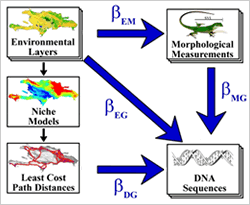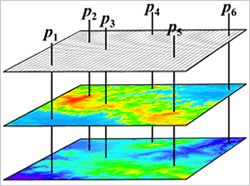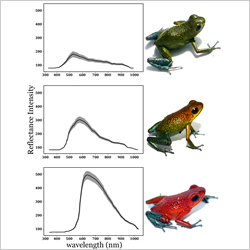Landscape Genetics…
Environmental and geographic variables can affect spatial genetic structure in myriad ways, and understanding the landscape ecological processes that influence gene flow and their outcomes is a major research goal of the lab. Using genetic data together with GIS data and innovative methods, we examine patterns of spatial genetic variation in nature with a major focus on understanding the effects of landscape heterogenetiy on gene flow and population demographics in both natural and modified environments. Some of our recent projects have focused on developing methods for and quantifying relative levels of isolation by distance (IBD) and isolation by environment (IBE), and several of our ongoing projects are investigating the general prevelance of these patterns in different organisms and the underlying processes that generate them.

Ecological Genomics…
Although it is well known that environmental differences can shape patterns of genetic and phenotypic variation, few studies have connected environmental variation to genetic adaptations. We are currently investigating spatial patterns of adaptive genetic variation in several amphibians and reptiles. Using genomic data and new spatial analysis methods, we can integrate genetic and environmental data to identify candidate genes for adaptation to particular environmental conditions. The identification of genes carrying a signature of selection under this method is especially valuable because it directly links the genes under selection to specific environmental forces of selection.

Phenotypic Evolution…
Patterns of phenotypic variation form conspicuous and often fascinating examples of the outcomes of evolution. We are particularly interested in systems in which phenotypic variation results from natural selection acting on ecologically divergent populations. Much of the work on these topics in the lab has been poison-frogs, several of which display striking levels of color variation, and investigating the evolution of phenotypic polymorphism in these species can tell us a lot about the forces promoting biological diversification in nature. We’ve used a variety of approaches to test hypotheses about the evolution of color polymorphism in poison-dart frogs, including landscape genetics and phylogeography, toxicity and spectral reflectance analyses, and chemical profiling of skin toxins.
